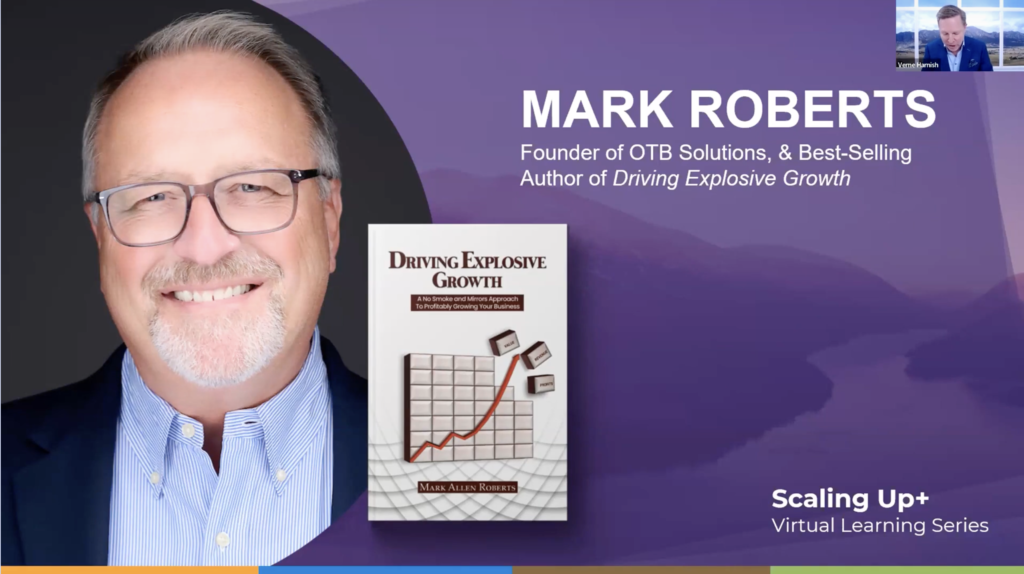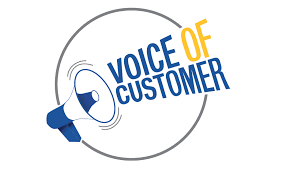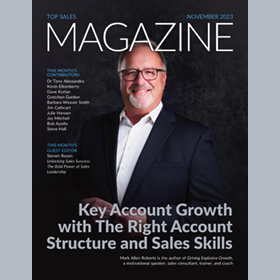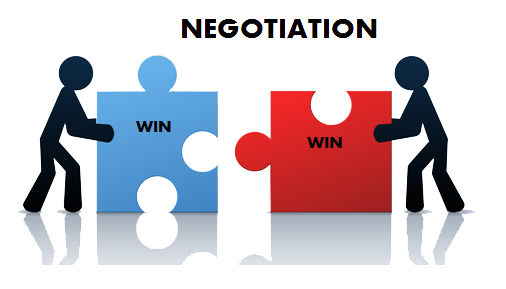
Verne the author of Scaling up invited me to speak on a webinar about my new book.
Listen to the Webinar.
Trascript:
We’ve got one of our own, one of our two hundred and sixty nine coaching partners, Mark Roberts, who’s asenior level sales and marketing leader with over thirty five years experience, driving profitable salesgrowth in market leading organizations.
He has done so at companies like Timkin, Alpha Enterprises, Vantage mobility, Gardner, Denver, mobilityworks, and Fred Olet. As an author, public speaker, sales skill trainer, sales acceleration coach, and again,as I mentioned, one of us. He has helped several firms scale and sell for higher than industry averagemultiples.
In twenty eighteen, he received the business excellence award from NSME and in twenty nineteen, the highspot sales enablement award. He was also recognized by sales hacker in the sales enablement categoryand was recently recognized in Sort of Success Magazine. For his data driven approach to growing salesand profits. And this month, he’s featured on the cover of Pop Sales Magazine.
He’s the founder of OTB Solutions LLC and is the popular business development blog, no smoke and mirrorsdot com. Ranked number one in fixing sales problems. As founder president of OTB sales, he helps clientsdiagnose and improve revenue, profits, and shareholder value, his new book released just a few months agodriving explosive growth. It is a no smoke and mirrors approach to growing the business profitably.
And he’s got a book coming out, which we’ll be promoting in Christmas around the voice of the customer.And so with that, hey, Mark. I wanna I wanna welcome you And you and I were talking just as we weregetting ready to, to launch, my dear friend David Risher, who helped Jeff Bezos, scale up Amazon, thenkinda took a break from that to do some nonprofit work, was recruited to be the CEO of Lyft a couple ofmonths ago. And one of the first things he posted is three days in.
He got certified to be a driver. He was proud that he could then be a driver. And every Sunday, and again, itwas the same Sunday. He posted.
He’s out driving customers.
He’s out meeting the other drivers. And I don’t know if anyone noticed, but a few weeks ago, he made anannouncement that put Lyft back on the radar of a lot of people. One of the things he discovered the voiceof the customer, if you would, is that women would often prefer a woman driver.
And so there’s a feature in the app that they’ve added that allow that to be the case. And anyone whochooses a diverse different driver to match their diversity is able to do that. And always, when we look inhindsight, it’s one of these. I can’t believe Somebody hasn’t thought of that before, but this is your world.And so, Mark, over to you.
Well, thank you for inviting me. What an amazing group of authors and content. I was copiously taking notesfrom the last presenter.
Yeah, I’ve been working on my book for ten years. I hope you all have a coach. My coach, has been with mefor over thirty years, and she was pushing me hard. Mark, you gotta write a book. And quite honestly, Ithought she was crazy.
I’ve helped so many different businesses, metals companies, plastics companies, food, beverage, you nameit. But what she was right, when I sat down and looked at the process that we always went through to drivewhat I call explosive growth, it was always the same. So I wrote the book. I hope people enjoy it. And again,no smoke and mirrors. It’s it’s about serving people, not selling them. It’s about intimately understandingthem and their challenges.
So today, what I wanted to do was kind of help everybody as we go into twenty twenty four.
I’m gonna ask you a couple questions today.
First of all, does your team have the skills, motivations, and beliefs to execute your twenty twenty four plan?
That sounds like such a easy question, but you might be surprised. I spoke at an event in Denver recently, Itwas CEO, CFO, CROs.
Oh, three hundred fifty people there. And I asked them, raise your hand. Raise your hand if you feel ahundred percent of your team have the skills, motivations, and beliefs to execute your plan. Not one handwent up.
Okay. Seventy percent. Seventy percent of your team have the skills. Not one hand went up.
So I just kept doing it, and we got down to around thirty to forty percent, and all of a sudden, a lot of thehands in the room went up. So my question to you is you’ve worked really hard. Hopefully, you follow theone page plan template, but does your team have the skills to execute it?
Another question I’d like to ask you is, could an outdated assumption about your customers be stalling yourgrowth? I see it all the time. My passion is voice of customer.
As Vern mentioned, my next book coming out at Christmas is only about voice of customer because It’s theone thing from my current book people wanted to hear more about.
So could an outdated assumption? About your market, your customers, be impacting and slowing downwhat could have been scalable, profitable growth.
Well, a pretty smart guy that I know and had the pleasure of meeting said developing strategy withoutmarket insights is criminal.
So let me ask you. You worked on your strategic plan. You’ve started assigning goals. You started you know,those key initiatives and thrusts, but how much customer insight went into your plan?
I like to refer to it as a as running an MRI. Run an MRI on your business, your customers, your markets, Let’sreally build a plan based on data.
If anybody on this call had a headache and they went to their doctor, and the doctor said, well, tell youwhat, sit down. We’re gonna do brain surgery. Run. Run away. Right? Hopefully, they’re gonna run some testThey’re gonna run an MRI. They’re gonna do some diagnostics.
Chances are all you might need as an aspirin. Right?
The businesses are the same way. We need to run an MRI on our business on a frequent basis to make surewe’re really tuned in to our markets and the problems that they have.
People ask me, Mark, I don’t need voice of customer research. What what all are you trying to learn? We weknow this. Right? Well, what we’re trying to learn is why do customers buy from you? Kind of a simplequestion, really. And you’d be shocked when I do, sales workshops.
How many sales people can’t answer that question?
Why don’t customers buy from you? Well, every salesperson will tell me price on that one. Right?
But what share of wallet do you have? How how much more business could you get? What’s the buyingprocess of your customers today?
What criteria do the buyers need to make purchases today?
What are their goals and challenges?
You know, every salesperson, you can ask them their goal, and they could probably tell you by the month.But ask them what the goals of their customers are, and that’s usually when you hear crickets.
And then how satisfied are your customers?
And are they willing to refer you? Those are some of the things we do when we conduct voice of customerresearch for clients.
We often get some friction. Oh, my sales guys do this. No. You don’t want your sales people doing this.
First of all, their job is to sell. Far too often salespeople listen to reply and not to learn. So you’re not gonnaget those valuable insights. Second, they have relationships.
They have great relationships with your customers, and your customers might might not be as honest asthey could be.
And they also have bias.
They can’t help it. We’ve trained them to be hunters. Right? So if they hear something in a conversation,they immediately jump to a sale. That’s not what we want during voice of customer research.
Sometimes we do win loss analysis. Some of our larger clients like one that does very large industrialmachines.
We call every customer. We call if they win, we call if they lose. If we ask salespeople why they lose, theysay price. Always, they always say price. But in preparing for today, we look at the data. Over just so manyclients. And what we hear heard was, over eighty percent of the time the buyer shared, I didn’t think thesalesperson really understood my problem, my challenges.
Seventy four percent said, I really didn’t like their approach. It felt kinda salesy. It felt they were trying to hittheir numbers and not solve my own problems. In the end, price, yes, price was on the list as well as,service time frame.
But have you asked your customers lately what it’s like to do business with you?
Let me give you a couple examples of the power of voice of customer research. I was so blessed in the lateeighties and nineties working for a plastics company.
We made mechanical security devices for audio tapes and videos, and all of a sudden, there was a bigmarket shift. The large, music producers decided to change the packaging in jewel cases.
So other words, the CD would just ship in the jewel case. And as you can imagine, that’s like a a lossprevention nightmare.
What my competitor did was they made a sample. They wrote a really nice cover letter with pricing. Theyput a rubber band around it and mailed it to every one of their customers.
What we did was we went out into the market, and we asked really good questions. We met with Walmart.We met with large music chains like music land at the time.
We met with bookstores. And what we found was There’s actually three different problems, three differentmerchandising challenges that people had.
With that data, we invented three different types of products, we sold over a hundred million packages overfifty percent gross margin, and we doubled the company in twelve months.
One of my favorite roles was helping a company that made vehicles for handicapped people. What they didwas they they reduced they lowered the floor of minivans, so that a consumer in a wheelchair could drive orbe a passenger comfortably in the van.
But the problem was when when they asked for my help, their revenue was pretty stalled, under twentymillion for about five years.
So again, I like to ask a lot of questions and get different versions of the truth. The leadership team sharedhow, you know, engineering, was so strong in their vehicle.
How they really intimately understood their dealers, but we really didn’t understand a lot about ourcustomers.
So while my sales team was out selling. I was interviewing people in in showrooms. And I’ll never forgetAkron, Ohio, the dealer’s name was Mobility Works, and this gentleman says, you know, You folks that makevans are not all that smart, which got my attention. He says, you know, we have less disposable incomethan most people. Why can’t you convert used vehicles instead of new vehicles and reduce the retail?
It’s like, this is such a brilliant idea. There’s gotta be a reason why.
Fast forward. Our sales started growing hundred and fifty percent, hundred and sixty percent year overyear.
We had to add second shift, third shift just to keep up. Today, over seventy percent of vehicles sold in thismarket, Our converted used vehicles. That company went from being stalled at twenty million dollars andlater sold for around ninety million dollars.
Oh, I I had really enjoyed helping this company. I was the managing director of pragmatic marketing. It’s theworld leader in teaching product managers how to develop products people wanna buy.
Well, during the recession, however, two thousand six, two thousand eight, We saw sales just tank. So wefollowed the process that we taught. We call, we interviewed customers, we interview customers we won,we interview customers we lost, We determined what had changed in their world, and we created new salestools, and we actually changed our sales process.
Within three months, sales got back up to pre recession numbers. And within six months, we were beatingthe recession numbers, pre recession numbers.
And then another fun story is I like to do the the, voice of customer calls when I can. And we have a clientthat makes metal, shelving, and you’ve probably seen some of their product at retail stores.
Well, I was interviewing some of their top accounts, and it was their third largest account. And the womanjust went on and on about how happy she was, satisfied with the quality, the service. But at the end of thecall, because I ask open ended questions, she said, you know, I am a little disappointed though.
What’s going on? Well, I asked them to quote a very large project that’s important to me and they no quotedit. So I had to go to one of their peditors. I’m not happy.
The quality is not as good. I said, tell you what, tell me more information. Let me call the CEO and see whatwe can do. Now, to the salesperson’s credit, they did follow the qualifying document that we have theirsalespeople follow.
But the CEO met with this person, had about a forty five minute conversation, and it turned into six hundredthousand dollar order.
And then sometimes, when we do voice of customer, research, we solve problems, it turns into newproblem, new new products.
If you go into Best Buy, or you go into any retailer, you’re probably gonna see a device that looks like this.
This device was designed by alpha enterprises back in the day when we were solving the music challenge,and then they said, you know what? Can you solve other problems?
Because when I have something locked behind a case, sales go down about seventy percent. But if it’s outlive, And I don’t need an employee to open a case. I can sell more. So we met with all the different retailersand we designed products that would solve problems and help them improve their sales.
That led to alpha ultimately being sold for over three hundred million.
So let’s get back to that other awkward question I asked. Does your sales team have the skills, motivations,and beliefs to execute your plan?
But here’s something scary. Fifty percent of salespeople have never had formal sales skills training.
You know, like how to have a conversation with somebody, how to uncover, unmet needs, how to qualifythem. So what we did was We can go in and quickly assess. One of the best ways to assess, and it’s thenumber one step in my book, by the way, is assessing assessing your customers and assessing yourcurrent team, assessing your leadership team with some of the scaling up tools, But assess your salesteam. The best way to assess sales is observation.
We can really determine level of mastery by watching people and and how they perform But sometimesthat’s unrealistic. Let’s say you have a team of seventy salespeople. That would take you years to do. Right?
The other thing that’s happened is buyers have shifted and changed post pandemic.
The new data out today says thirty percent of buyers choose not to engage with a salesperson at all. Andwhen we ask why, it’s because sales is behaving badly.
They don’t have the skills. They’re showing up. They’re throwing up, and they’re not really helping people.Another shift is eighty five percent of buyers expect a salesperson to connect the dots between what theysell and the value it delivers the buyer. That was a Florida state study. And sadly, around fourteen ofsalespeople actually do that today.
Over eighty seven percent of buyers expect virtual selling to continue. So my challenge is, have you helpedyour salespeople be able to sell virtually.
And what we keep hearing over and over again in a lot of different ways is I want human to human authenticconversations. Kinda like, the the previous speaker.
They wanna trust us. People buy based on trust and they buy based on confidence.
So I kinda looked at all the different feedbacks we’ve received over the years because we transcribe everyinterview we do. And I took a little bit of liberty, and and and what I’m hearing people saying is I don’t wantsales reps pitch slapping me. I need industry consultants to help me solve my market challenges.
So the question is, what do you have? Do you have sales reps who are out trying to hit their numbers, or areyou having consultants in your industry sharing insights with your customers, intimately understanding theirchallenges and giving them solutions.
When I ask that question of an audience of sales leaders, It was kind of disturbing.
When I asked that question, about thirty percent of the people believe that, you know, my team has theskills, motivations, and beliefs to do what we need them to do. But the vast majority needs additionaltraining And what the data shows is about twenty percent of the people in sales roles actually shouldn’t bein sales.
They would add a lot more value to your organization and other roles.
So you don’t have to guess anymore. I remember when I spoke at the break, people always come up to meand say some pretty interesting things. And one sales leader said, you know, that was a disturbing question,and I really need the answer, but was kinda uncomfortable to admit that I don’t. Well, today, you don’t haveto take you don’t have to guess. Like this team here, we were helping to add sixty nine salespeople withinten days, we had them taken a sales assessment.
Great news. Team of hunters, but they really needed some help with closing skills. So very quickly, kind oflike the MRI, we diagnose the team, and then we prescribe training and coaching, new tools, new systems,new process, so they can execute their plan.
What was the impact of closing those skills? Thirty nine percent increase in organic sales over three years.
They didn’t have to introduce any new markets. They didn’t have to open up and sell any new products. Allwe did was close skills gaps and give their customers a better experience.
So again, my name’s Mark Roberts. I wrote a book driving explosive growth. My next book is on voice ofcustomer and how to leverage the voice of your customers.
And My mission in being here today is to help you.
Help you be prepared for twenty twenty four.
There’s a lot of ways to get in touch with me. Please connect. I try to put something out of value everyweek.
Burn. We’ll go back.
Thank you so much. You know, as I was listening, I you made me think, an early, early client that I wasinvolved with. It was literally thirty years ago, a company called Deltek. They were in Northern Virginia, theirjob to be done was to provide the first real focused accounting system for government contractors becausework doing work for governments can be quite more onerous from an accounting perspective.
And the founder was Ken Delaski. At the time, he had about seventy employees And look, he had a verysimple b hack. You wanted to be number one in that space. And after being there for a day, I could tell hewas gonna do it because I saw two things.
I was in the technical support area. And there were four people answering phones, you know, taking thecustomers, concerns, and questions about the software. And there was this cubicle with this guy in it whowas not answering any phones, and I’m not quite sure could.
And I’m like, who is this guy? And he goes, so that’s one of our programmers. Every one of our programmershas to spend a half a day a week doing their work from this cubicle. So they’re overhearing directly.
What are the real concerns and challenges the customer real time is having with our software, that way it’dbe much quicker. Kinda almost like Francis phrase, getting the voice of the customer installed in thesoftware. And if one of the technical support people didn’t know the answer, they could say, look, I got oneof the guys who actually programmed it. And I thought, alright.
And I see an empty cubicle cubicle. And who’s that for? And you can guess. That was for Ken.
He said, look, and I would spend a day a week, not answering calls, but doing my work from that cubicle so Icould hear the same voice of the customer real time. And I knew, Mark, when I saw those two thingshappening inside his company, the Deltek would be the hundred ton gorilla. In that space, and they theyprove to be the case. I know you were sharing a story about a client that was selling a two million dollarpiece of equipment.
Share that story real quick. We’ve got a couple of them. Yeah. I have a a brand new client.
Their private equity firm asked me to help them. They sell industrial equipment. Talking like two milliondollar machines.
And when I went for the versions of truth with their leaders, they say, well, you need to understand ourmark Mark. This thing’s a very big and expensive machine. People typically buy one, and we never hearfrom them again. Well, that didn’t resonate with me, but, okay.
So our team started making phone calls. We called their existing customers.
We called customers they quoted, but did not win. We also called customers who raised their hand and hadinterest, but were never quoted. And here’s what we found.
Thirty percent, thirty three zero of their current customers need another machine.
And their strategy going into twenty twenty four before we did this research was we need to call on newpeople.
Forty percent of the people they quoted but did not win plan to buy another machine.
So talk about a shift in your strategy. Talk about an improvement in your overall profit margins.
I I wanna leave everybody with a challenge. I know we gotta jump to the next author.
I want you to call five customers and interview them. Just interview them. Ask them how you’re doing. Askthem some of the challenges they’re facing and see if there’s any that you face. And then as far as yoursales team, I want you to do one thing. I want you to ask your sales people to leave you a voicemail sharingyour value proposition.
Hopefully, you’ve got a little bourbon when you’re listening to those because you’re gonna need it.
Make sure your team has the skills to execute the plan and communicate your value If you can’tcommunicate your value, how can your customers understand it? But thank you, Vernon, for having me heretoday. You got it, Mark. Hey, one more story.
You know, I’ve always got one more story. Okay. I think of a company citizen. Raymond Roberts and hiswife, both Cubans founded it.
They were working with government agencies, and they had seven main clients. Seven major agencies.They were about twelve million in revenue, and they said we’d like to get to a hundred million. So clearly, itwas we need to go find more like those seven agencies.
But our first quarterly theme was called CSI customer satisfaction investigation, and they realized that theydidn’t just have one customer inside the government agency There were lots of people that their solutionwas touching. And so they went about calling twenty customers a day Ninety day and then by the way, theycome into their daily huddle and report out ninety days later, Mark, they found eighty seven million dollarsof additional business within those seven clients. They didn’t need to go out and find more to your point.And so I just hope everyone who’s been listening in take it very serious that the folks that are running majorcompanies and the examples that we gave of mid market are the ones that really get back in touch with thecustomer. And, Mark, I know you guys do this work for folks. And so if you’re not gonna do it, get Mark tohelp out.












